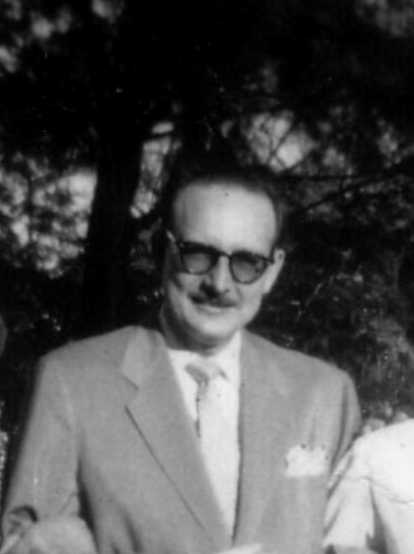4.1.2.8 The poetic work of Octavio Smith (1921-1987)

Octavius Smith initially remained distant from the aesthetic movements of his time, but he nonetheless shared Origen’s cultural concerns and developed a poetics marked by the renunciation of carnality, as part of the sense of priesthood within Catholic religiosity.
Cintio Vitier, compiling some of his pieces in “Ten Cuban Poets,” stated: “A withdrawn spirit, a Catholic of profound and living faith, he has been producing for years a poetic work in which we notice the subtle and stubborn advance of his language toward a sphere entirely of its own, characterized by the acute incineration of the senses in an ascetic fervor.”
After this trial, Smith’s work continued to move in a similar orbit, but not only of an ascetic nature, since reality appears transposed into a delicate lyricism, in which adjectivization prevails and a use of rhetorical resources aimed at expressing all the grandeur that the poet perceives, from an inveterate cult of the Creator and the universe, close to the pantheistic worldview.
Among the poetic pieces he conceived are the following: “Del furtivo destierro” (Of Furtive Exile), 1946; “Casa marina” (Marine House), 1946; “Estos barrios” (These Neighborhoods), 1966; “Crónicas” (Chronicles), 1974; “Andanzas” (Wanderings), 1987; and the poetic anthology that includes pieces from the previous volumes “Lejos de la casa marina” (Far from the Marine House), from 1981. Throughout this career, he maintained that lyricism of aquatic resonance, with a spirituality that finds its appropriate path of expression in the lyrical.
The poet has the ability to transmute reality to imbue it with a mystical and magical aura, born from his inner imaginative capacity and not from immediate perception beyond its contours. In this sense, he revisits some poetic threads of our tradition lost in time, such as the unique sensitivity of Luisa Pérez de Zambrana.
Octavio Smith, however, is not a poet of simplicity or lyrical synthesis. His understanding of the world is always expressed through broad adjectives intended to convey the physical and emotional richness of his context, but where his perspective mediates the poetic substance. Although his work was not extensive, and perhaps for this reason it does not figure prominently in our tradition—it does not appear in most anthologies of national lyrical work—he did imbue his creations with a peculiar lyricism, in its own way anchored to Cuban tradition.








